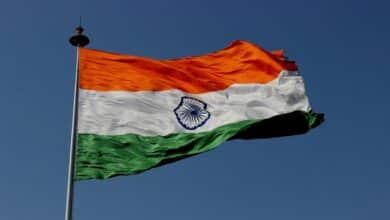Flag Wavar: A Comprehensive Guide

Flag Wavar is a term that has been gaining attention recently in various discussions, from social movements to cultural references. While it may seem like a niche topic, understanding its underlying meaning and significance is important for anyone interested in contemporary issues, symbols, and their roles in societal changes. In this blog post, we will explore what flag wavar means, its history, and its impact on different aspects of society.
What is Flag Wavar?
Flag wavar, at its core, is a concept that blends symbolism with action. The word “flag” traditionally refers to a banner, emblem, or symbol of a country, group, or cause. “Wavar,” on the other hand, is a relatively new term that refers to a specific type of movement or action that uses flags as a means of protest, identity, or expression.
The primary function of flag wavar is to use flags as symbols of solidarity, rebellion, or resistance. These flags, whether they represent national pride, political ideologies, or social justice causes, are displayed prominently to communicate specific messages. Over time, flag wavar has evolved to include more dynamic and modern approaches to activism, often facilitated by digital media and global interconnectedness.
In this section, we will delve deeper into the origins of flag wavar, how it has been used historically, and the ways in which it continues to shape political and social landscapes today.
The Historical Roots of Flag Wavar
Flag wavar did not emerge overnight. Its origins can be traced back to various historical moments when flags were used as powerful symbols of power, revolution, or identity. During the American Revolution, the use of the Continental Army flag was essential in rallying support for independence. Similarly, during the French Revolution, the tricolor flag became a symbol of liberty, equality, and fraternity, representing the desires of the people for change.
The concept of flag wavar as a form of resistance grew stronger through the 20th century. From civil rights movements to anti-war protests, flags were employed as tools of visibility and protest. The most iconic examples include the use of flags during the Vietnam War protests, where the American flag was burned to demonstrate opposition to the war, or the rainbow flag, which became a symbol of LGBTQ+ pride.
Flag wavar is not confined to the past, though. It continues to manifest in modern political movements, such as the flags seen at protests advocating for climate change action, racial justice, or women’s rights. These instances show that flags remain integral to political and social movements worldwide.
Flag Wavar and Political Movements
One of the most significant aspects of flag wavar is its connection to political movements. Flags have always been central to political revolutions, protests, and demonstrations. The act of waving a flag, or the intentional destruction or alteration of a flag, serves as a potent political statement. It can signify support for a specific cause, the desire for societal change, or opposition to a current political regime.
For example, during the Civil Rights Movement in the United States, flags were often used to communicate both pride and resistance. The Confederate flag, historically associated with the South and slavery, was a target of protest as African Americans and their allies sought to dismantle systemic racism. On the other hand, the American flag, with its ideals of liberty and freedom, was used by activists to remind the government of its promise to uphold these values for all citizens.
The 21st century has seen new forms of flag wavar emerge, with groups across the globe adopting flags to symbolize their political struggles. These include flags representing movements for independence, environmental justice, and international solidarity. Whether it is the use of the Palestinian flag in solidarity with Palestine or the flags flown during the Hong Kong pro-democracy protests, flag wavar continues to provide a powerful visual language for political causes.
The Role of Digital Media in Flag Wavar
In today’s interconnected world, flag wavar has evolved beyond physical demonstrations. Digital platforms have become critical in amplifying the message behind flags, making the reach of flag-based movements broader than ever before. Social media platforms like Twitter, Instagram, and Facebook have made it easier for individuals and groups to showcase flags in solidarity, protest, and activism.
The impact of digital media on flag wavar can be seen in viral campaigns such as #BlackLivesMatter, where flags representing solidarity with the African American community and its fight for justice have been shared widely. Images of flags from around the world are often used in online discussions to show unity and collective action for various causes. Furthermore, digital platforms allow the rapid spread of images showing people altering or burning flags, which can capture the attention of the masses and ignite conversations about the power and politics of flag wavar.
The ability to create and distribute images of flags across the globe has revolutionized the way we understand flag wavar. Instead of being confined to a local or national context, flag wavar now has a truly global reach, allowing individuals from different backgrounds to unite over shared symbols of resistance and hope.
Flag Wavar in Cultural Identity and Expression
Flags also play a central role in the expression of cultural identity. Many communities use flags to celebrate their heritage, preserve traditions, and express pride in their cultural background. In this way, flag wavar can also serve as an expression of cultural resistance, particularly in regions where cultural identities are under threat.
For example, indigenous communities in North America have used flags to assert their sovereignty and resist colonial forces. The flag of the Zapatista movement in Mexico, with its emblem of a fist and the red and black colors, is another example of how flags can represent cultural pride and political resistance.
Flag wavar allows marginalized groups to reclaim and redefine their identities in the face of oppression. Through the creative use of flags, these communities communicate a message of resilience, hope, and pride. By raising these flags, they challenge the dominant cultural narratives and advocate for the recognition of their rights and heritage.
The Emotional Power of Flag Wavar
The emotional power of flag wavar cannot be understated. Flags are more than just pieces of fabric—they are imbued with deep meanings and emotions that resonate with individuals and communities. The sight of a flag being raised can evoke feelings of unity, pride, and hope, while the sight of a flag being desecrated can stir up emotions of anger, betrayal, or sadness.
The symbolic nature of flags gives them the ability to tap into the collective consciousness of a group. A flag can represent the sacrifices of past generations, the struggles of the present, and the hopes for a better future. As such, flag wavar has the potential to create a sense of shared purpose and solidarity among those who rally around a particular flag or cause.
At the same time, the act of flag desecration, whether through burning, tearing, or defacing, can be equally powerful in conveying a message of dissent. This act can be seen as an expression of frustration or defiance, signaling that the status quo is no longer acceptable. In this way, flag wavar carries with it an emotional charge that can galvanize movements and inspire change.
The Future of Flag Wavar: New Directions and Possibilities
As we move further into the 21st century, the role of flag wavar is likely to evolve. With the increasing use of digital platforms and the rise of new social and political movements, flag wavar will continue to be a tool of expression, resistance, and unity. New flags will emerge, representing fresh causes and challenges that reflect the changing global landscape.
Moreover, the intersection of technology and activism will bring about new possibilities for flag wavar. We may see more interactive, digital flags that can be manipulated and shared in virtual spaces. The concept of “flag wavar” may also extend beyond the traditional understanding of flags as physical objects, incorporating innovative forms of expression, such as holograms, augmented reality, or digital art.
Whatever the future holds, one thing is certain: flag wavar will remain a significant part of political and cultural expression, continuing to shape the way we communicate our values, beliefs, and hopes for the future.
Conclusion
Flag wavar is a powerful and evolving concept that represents the use of flags as symbols of resistance, identity, and political expression. Whether through historical movements or modern digital activism, flag wavar has consistently played an essential role in shaping the narratives of social and political change. As we move into the future, the emotional and symbolic power of flags will continue to inspire and unite individuals and communities in their pursuit of justice, freedom, and equality.
FAQs
1. What does flag wavar mean?
Flag wavar refers to the use of flags as symbols of protest, resistance, or cultural expression. It involves using flags to communicate political messages or show solidarity for a cause.
2. How has flag wavar been used in political movements?
Flag wavar has been a tool for political movements throughout history, with flags representing revolution, resistance, or support for causes such as civil rights, environmental justice, and democracy.
3. How has digital media influenced flag wavar?
Digital media has expanded the reach of flag wavar by allowing flags to be shared, altered, and displayed widely on social media, creating global movements of solidarity and protest.
4. Can flag wavar be used to express cultural identity?
Yes, flag wavar can represent cultural pride and resistance, particularly in marginalized communities where flags are used to assert heritage and fight against cultural erasure.
5. What might the future of flag wavar look like?
The future of flag wavar may include digital flags, holograms, and virtual expressions of solidarity, reflecting the continued evolution of activism in the digital age.





